We all know how uncomfortable and painful plantar fasciitis can be. That stabbing sensation in the heel or arch of the foot can interfere with our daily lives.
But fear not because we might have found a solution! Insoles, those tiny inserts that fit snugly inside your shoes, have been touted as a potential remedy for this nagging foot condition.
So, are these tiny powerhouses the answer we’ve been searching for?
Let’s dive into the world of insoles and see if they can genuinely provide the relief we yearn for.
What is Plantar Fasciitis?
Definition
Plantar fasciitis is a common foot condition that involves inflammation of the plantar fascia, a thick band of tissue that connects the heel bone to the toes. This inflammation can cause pain and discomfort in the heel and arch of the foot, making it difficult to walk or stand for long periods.
Causes
Several factors can contribute to the development of plantar fasciitis. The most common cause is excessive strain or pressure on the plantar fascia, which can occur due to running, jumping, or standing for long periods. Other factors that can increase the risk of developing plantar fasciitis include obesity, improper footwear, high or low arch, and tight calf muscles.
Symptoms
The most common symptom of plantar fasciitis is heel pain, often described as a sharp or stabbing sensation. This pain is typically worse in the morning or after rest periods and may improve with activity. Other symptoms can include pain or discomfort in the foot’s arch, stiffness or limited mobility, and swelling or redness in the heel area. Plantar fasciitis can become a chronic condition if left untreated and significantly impact daily activities.
Understanding Insoles
Definition of insoles
Insoles, also known as shoe inserts or orthotics, are devices placed inside the shoe to provide additional support and cushioning to the foot. They are designed to improve foot alignment and alleviate pressure on the plantar fascia, making them a popular treatment option for individuals with plantar fasciitis.
Types of insoles
Various types of insoles are available on the market, each offering different levels of support and cushioning. These include:
- Arch support insoles: These insoles are designed to provide extra support to the arch of the foot, which can help relieve strain on the plantar fascia.
- Cushioned insoles: These insoles are made from soft materials, such as gel or foam, and are designed to provide additional cushioning and shock absorption. They can help reduce the impact on the foot while walking or running.
- Custom-made insoles: These are specifically tailored to the individual’s foot shape and arch type. A podiatrist typically prescribes them and can provide optimal support and comfort for those with plantar fasciitis.
- Off-the-shelf insoles are readily available in stores and come in standard sizes. While they may not offer the same level of customization as custom-made insoles, they can still provide some relief for individuals with plantar fasciitis.
This image is the property of Amazon.com.
The Relationship Between Insoles and Plantar Fasciitis
How insoles can help with plantar fasciitis
Insoles can be highly effective in managing the symptoms of plantar fasciitis. By providing additional support and cushioning, insoles can help reduce the strain on the plantar fascia and promote proper foot alignment. This can help alleviate pain and discomfort, allowing individuals with plantar fasciitis to engage in daily activities with less discomfort.
Insoles can also help distribute pressure evenly across the foot, reducing the risk of further injury to the plantar fascia. They can provide shock absorption, lessening the impact on the foot while walking or running. Additionally, insoles can help improve foot function and correct any biomechanical imbalances that may contribute to plantar fasciitis development.
Effectiveness of insoles in treating plantar fasciitis
Numerous studies have shown insoles’ effectiveness in managing plantar fasciitis symptoms. A study published in the Journal of Orthopaedic & Sports Physical Therapy found that participants who used arch support insoles experienced significant improvements in pain and function compared to those who did not use insoles.
Another study published in the Journal of Foot and Ankle Research found that participants who used custom-made insoles reported reduced pain and improved daily activities. These findings suggest insoles can be an effective treatment option for individuals with plantar fasciitis.
However, it is essential to note that the effectiveness of insoles may vary from person to person. Some individuals may find insoles provide significant relief, while others may experience minimal improvement. It is recommended to consult with a healthcare professional, such as a podiatrist, to determine the most appropriate treatment plan for individual needs.
Choosing the Right Insoles for Plantar Fasciitis
Consultation with a podiatrist
When choosing the right insoles for plantar fasciitis, it is essential to consult with a podiatrist. A podiatrist is a healthcare professional specializing in foot and ankle disorders and can provide expert advice on which type of insole is most beneficial.
During a consultation, a podiatrist will assess the individual’s foot structure, arch type, and biomechanics to determine the underlying causes of plantar fasciitis. They may recommend custom-made insoles to address these issues and provide optimal support and cushioning.
Consideration of foot type
It is also essential to consider the individual’s foot type when choosing insoles for plantar fasciitis. This can help ensure that the insoles provide the proper support and cushioning for the individual’s needs.
For individuals with a high arch, insoles with arch support can help distribute pressure evenly and stabilize the foot. On the other hand, individuals with a low arch may benefit from insoles with additional cushioning to help absorb shock and reduce strain on the plantar fascia.
Custom-made vs. off-the-shelf insoles
When choosing insoles for plantar fasciitis, individuals typically have the option of custom-made or off-the-shelf insoles. Custom-made insoles are specifically tailored to the individual’s foot shape and arch type, providing high customization and support. While they may be more expensive than off-the-shelf insoles, they can provide optimal relief for individuals with plantar fasciitis.
On the other hand, off-the-shelf insoles are readily available in stores and come in standard sizes. While they may not provide the same level of customization as custom-made insoles, they can still provide some relief for individuals with plantar fasciitis. Choosing insoles that fit correctly and provide adequate support and cushioning for the individual’s needs is essential.
This image is the property of cdn.shopify.com.
How Insoles Provide Relief from Plantar Fasciitis Symptoms
Arch Support
One of the main ways insoles relieve plantar fasciitis symptoms is by offering arch support. Arch support insoles are designed to provide additional support to the arch of the foot, which can help redistribute pressure and reduce strain on the plantar fascia. By promoting proper foot alignment, arch support insoles can help alleviate pain and discomfort associated with plantar fasciitis.
Shock Absorption
Insoles with cushioning properties, such as gel or foam, can provide shock absorption, which can help reduce the impact on the foot while walking or running. This can be particularly beneficial for individuals with plantar fasciitis, as it can help lessen the strain on the plantar fascia and alleviate pain.
Even the Distribution of Pressure
Insoles can also help distribute pressure evenly across the foot, reducing the risk of further injury to the plantar fascia. Providing additional cushioning and support, insoles can help prevent excessive pressure on specific foot areas, such as the heel or arch. This can help alleviate pain and discomfort associated with plantar fasciitis.
Other Treatment Options for Plantar Fasciitis
While insoles can effectively manage plantar fasciitis symptoms, they are not the only treatment option available. Other treatment options that a healthcare professional may recommend include:
Physical therapy
Physical therapy can help improve foot strength and flexibility and correct any biomechanical imbalances that may contribute to the development of plantar fasciitis. Physical therapists can provide exercises and stretches to help alleviate pain, improve mobility, and prevent further injury.
Stretching exercises
Stretching exercises can help relieve tension in the calf muscles and plantar fascia, reducing strain on the foot. Exercises such as calf stretches, and plantar fascia stretches can be beneficial in managing the symptoms of plantar fasciitis.
Night splints
Night splints are devices worn while sleeping to help stretch the plantar fascia and Achilles tendon. Night splints can help alleviate pain and stiffness in the morning by keeping the foot in a dorsiflexed position.
Medications
Nonsteroidal anti-inflammatory drugs (NSAIDs), such as ibuprofen, can help reduce inflammation and alleviate pain associated with plantar fasciitis. These medications are commonly used in conjunction with other treatment modalities.
Cortisone injections
In some cases, cortisone injections may be recommended to reduce inflammation and alleviate pain in individuals with severe plantar fasciitis. A healthcare professional typically administers these injections and can provide temporary relief.
Surgery
Surgery is generally considered a last resort option for individuals with chronic and severe plantar fasciitis that does not respond to conservative treatment methods—surgical procedures for plantar fasciitis aim to release tension in the plantar fascia and promote healing. Discussing the risks and benefits of surgery with a healthcare professional is essential.
This image is the property of www.drscholls.com.
Benefits and Limitations of Insoles in Plantar Fasciitis Treatment
Benefits of using insoles
Several benefits are associated with using insoles for treating plantar fasciitis. Some of these benefits include:
- Pain relief: Insoles can help alleviate pain and discomfort associated with plantar fasciitis, allowing individuals to engage in daily activities with less discomfort.
- Improved foot alignment: Insoles can promote proper foot alignment and help correct any biomechanical imbalances contributing to the development of plantar fasciitis.
- Shock absorption: Insoles with cushioning properties can provide shock absorption, reducing the impact on the foot while walking or running.
- Even distribution of pressure: Insoles can help distribute pressure evenly across the foot, reducing the risk of further injury to the plantar fascia.
Limitations of using insoles
While insoles can be highly effective in managing the symptoms of plantar fasciitis, it is essential to be aware of their limitations. Some limitations of using insoles include:
- Individual variability: The effectiveness of insoles may vary from person to person. While some individuals may experience significant relief with insoles, others may not experience the same level of improvement.
- Limited long-term effects: While insoles can provide short-term relief from plantar fasciitis symptoms, they may not necessarily address the underlying causes of the condition. To achieve long-term relief, it is essential to address any biomechanical imbalances or contributing factors causing plantar fasciitis.
- Proper fitting: For insoles to be effective, they must fit properly and provide adequate support and cushioning. Ill-fitting or poorly designed insoles may not provide the desired relief or may even exacerbate symptoms.
Tips for Using Insoles Effectively
Proper fitting and placement
When using insoles for plantar fasciitis, it is essential to ensure they fit properly and are placed correctly inside the shoe. Ill-fitting insoles may not provide the desired support and cushioning and can even lead to further discomfort. It is recommended to consult with a healthcare professional or follow the manufacturer’s instructions to ensure proper fitting and placement of the insoles.
Gradual adaptation
When first using insoles, it is essential to allow for a gradual adaptation period. This means gradually increasing the time spent wearing the insoles daily to allow the foot muscles to adjust. Starting with shorter periods of wear and gradually increasing the duration can help prevent discomfort or pain associated with the adaptation process.
Regular maintenance and replacement
Insoles should be regularly inspected for wear and tear and replaced as needed. Over time, the materials in insoles can break down and lose their effectiveness, so it is essential to replace worn-out insoles to ensure continued support and cushioning for the feet.
This image is the property of Amazon.com.
Insoles vs. Orthotics for Plantar Fasciitis
Difference between insoles and orthotics
While “insoles” and “orthotics” are often used interchangeably, there is a slight difference between the two. Insoles are any insert placed inside a shoe for added support and cushioning. They are designed to provide additional comfort and can be readily purchased over the counter.
Orthotics, on the other hand, are specifically designed to address specific foot conditions or abnormalities. They are typically custom-made and prescribed by a healthcare professional, such as a podiatrist. Orthotics are tailored to the individual’s foot structure and biomechanics, providing optimal support and correction for conditions such as plantar fasciitis.
When to consider orthotics
While insoles can effectively manage plantar fasciitis symptoms, individuals with more severe or chronic cases may benefit from custom-made orthotics. Orthotics can provide a higher level of customization and correction for biomechanical imbalances, offering targeted relief for plantar fasciitis.
It is recommended to consult with a podiatrist or healthcare professional to determine whether insoles or orthotics would most benefit individual needs. They can assess plantar fasciitis’s severity and underlying causes and recommend the most appropriate treatment option.
Conclusion
Insoles can be an effective treatment option for individuals with plantar fasciitis. By providing additional support, cushioning, and proper foot alignment, insoles can help alleviate pain and discomfort associated with plantar fasciitis, allowing individuals to engage in daily activities with less discomfort.
However, it is essential to seek professional advice when choosing insoles for plantar fasciitis. A consultation with a podiatrist can help determine the most appropriate type of insoles based on individual needs, foot type, and level of support required. Custom-made insoles may be recommended for individuals with more severe or chronic plantar fasciitis, while off-the-shelf insoles can relieve milder cases.
Insoles should be used with other treatment modalities, such as physical therapy, stretching exercises, and proper footwear. Addressing any underlying causes or contributing factors causing plantar fasciitis is essential to achieve long-term relief.
Remember, the key to effectively managing plantar fasciitis is seeking professional advice and developing a comprehensive treatment plan that addresses individual needs and symptoms.
This image is the property of Amazon.com.

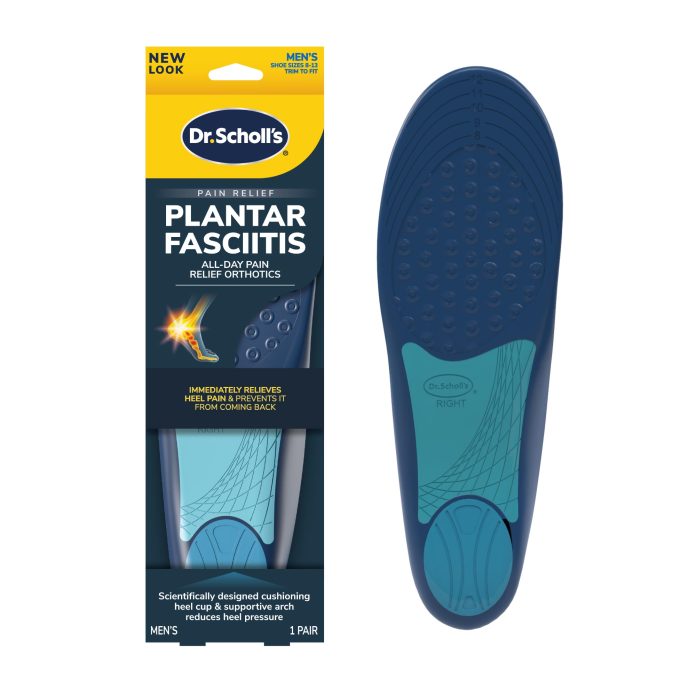
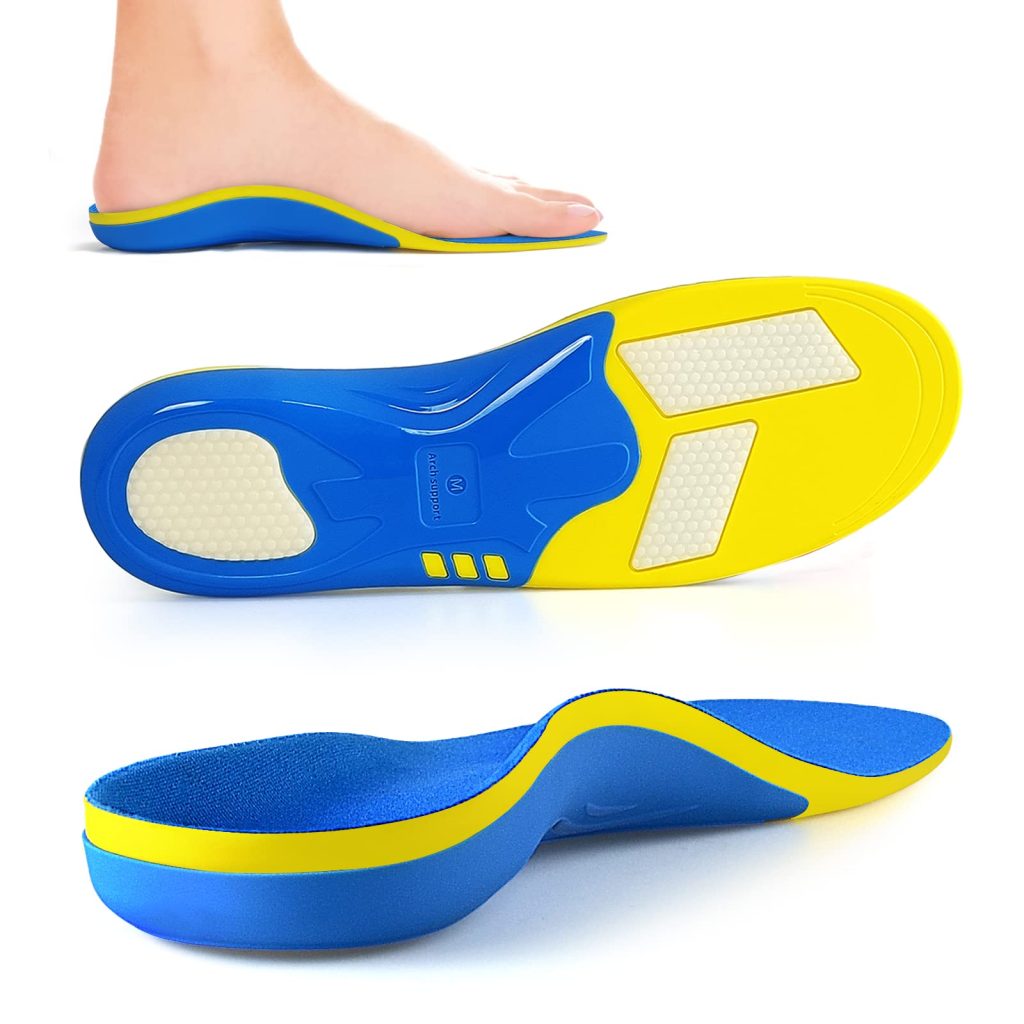
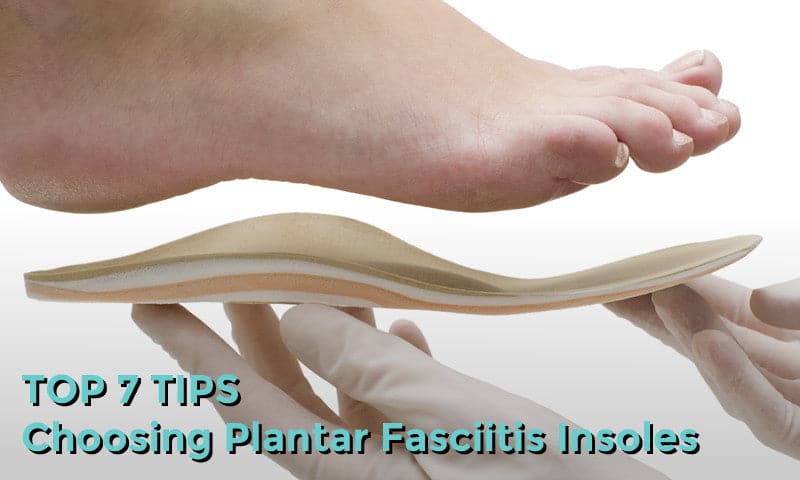
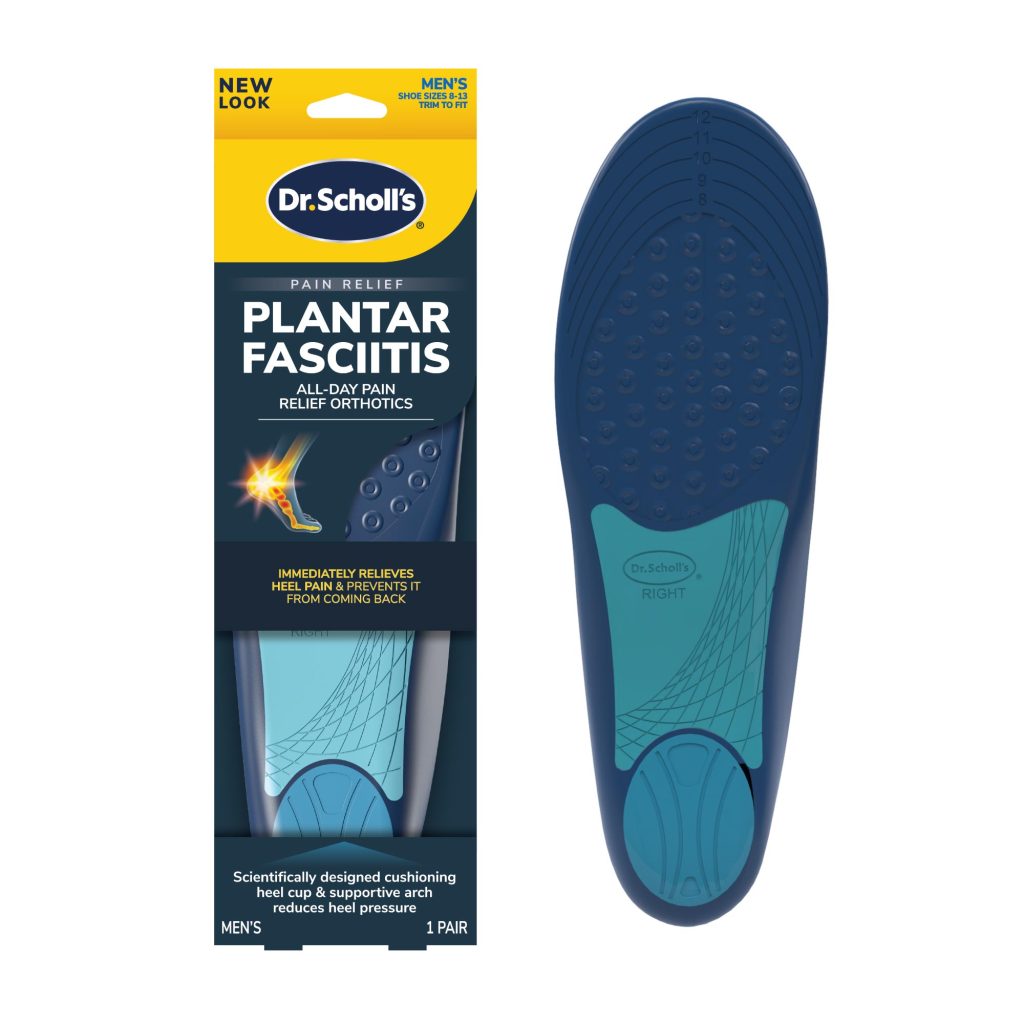
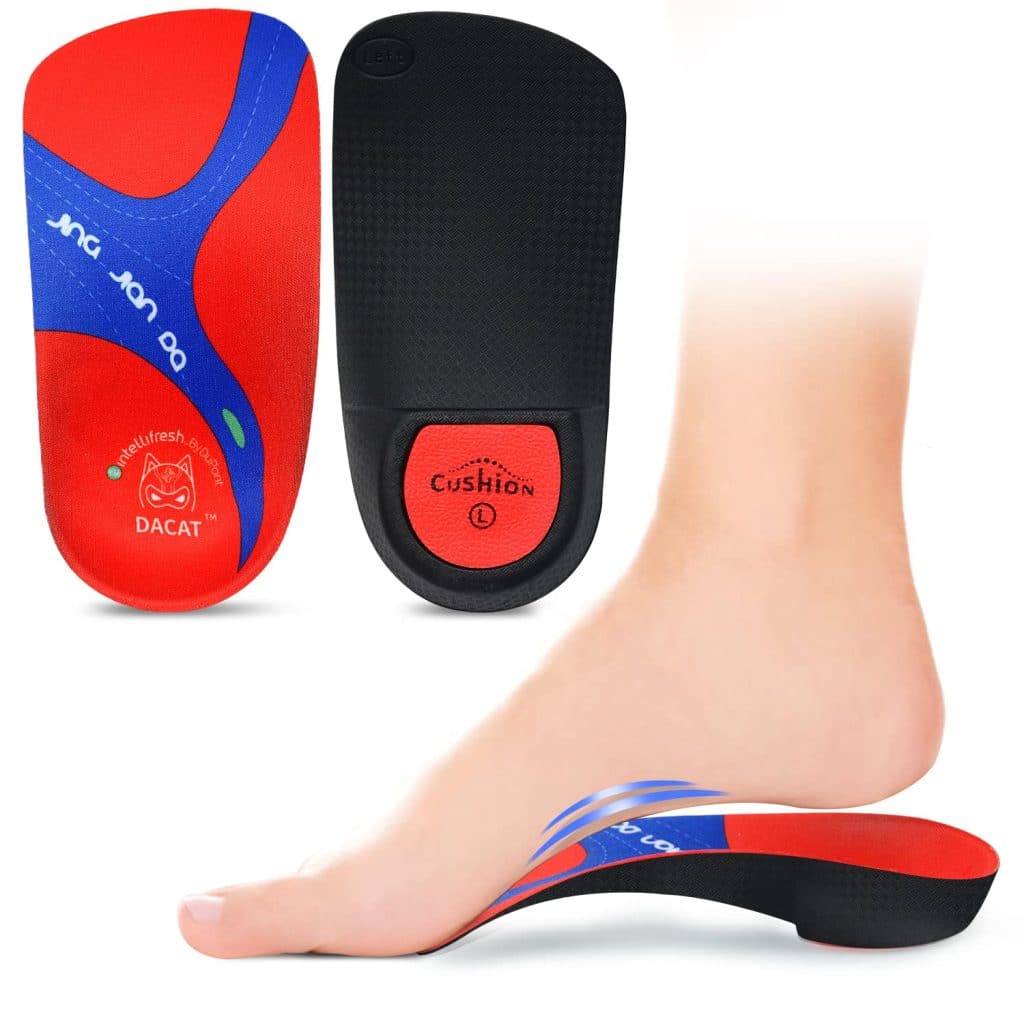
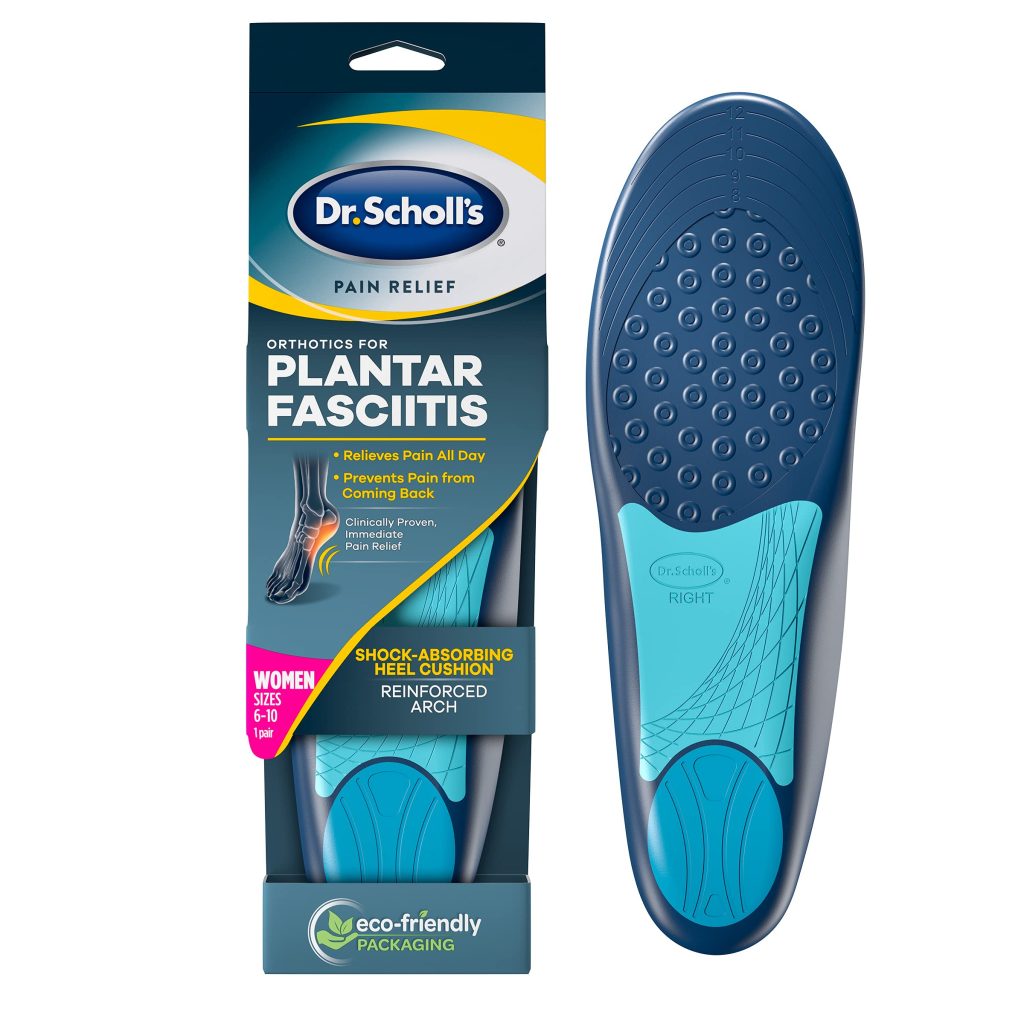





![Can Insoles Help With Plantar Fasciitis? | Insoles FeelLife Plantar Fasciitis Relief Shoe Insoles [1-Pair], Arch Support Insoles, Running Athletic Gel Shoe Inserts, Orthotic Insoles for Arch Pain [Trim to Fit: Men 8-11/Women 9-12]](https://m.media-amazon.com/images/I/41wenlYrkjL._SS520_.jpg)










































